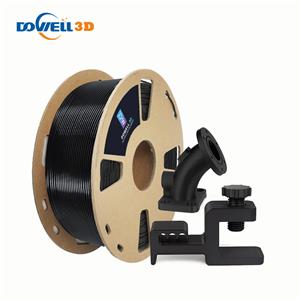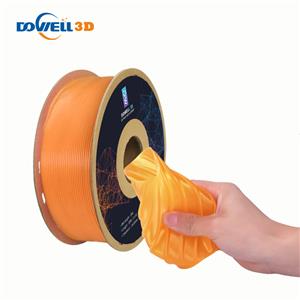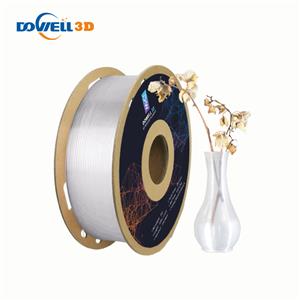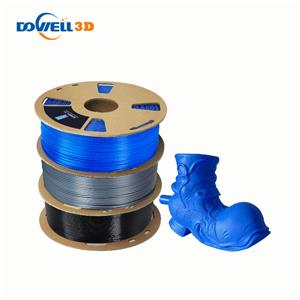3D printing of carbon fiber filament
3D printing of carbon fiber
The emergence of 3D printing has brought a transformative revolution to the design and manufacturing fields. Now, with the emergence of 3D printed carbon fiber reinforced composites, a whole new field is unfolding. Carbon fiber was first invented in 1860.
Why carbon fiber is used as a 3D printing material
Over time, carbon fiber has gained significant popularity across different industries due to its exceptional properties such as high stiffness, tensile strength, low weight, chemical resistance, high temperature resistance, and low thermal expansion. It’s worth noting that pure carbon fiber, despite being lighter, is five times stronger and twice as hard as steel. These properties make carbon fiber suitable for applications that rely on material properties to optimize performance, particularly in areas such as aerospace, automotive, military and civil engineering.
The mechanical properties of 3D printed carbon fiber reinforced composites exceed those of almost all other 3D printed plastics in terms of toughness or temperature resistance.
Carbon fiber filaments consist of short carbon fiber segments less than a millimeter in length, mixed with thermoplastic. Carbon fiber is compatible with numerous thermoplastics, including PLA, PETG, nylon, ABS and polycarbonate. Improves the strength and stiffness of the tow while reducing overall weight.
How to 3D print carbon fiber
Generally, 3D printed carbon fiber filaments maintain properties consistent with the substrate to which they are bonded. The key difference is that fibers can cause nozzles in 3D printers to clog, so experts recommend using hardened steel nozzles. Furthermore, when the fiber content exceeds a certain threshold, the surface finish of 3D printed objects may be compromised.
In the field of 3D printing, carbon fiber is mainly used in two ways: through carbon fiber reinforced filaments or continuous carbon fiber reinforcement. Reinforced carbon fiber filaments have greater strength than unreinforced filaments. However, for stronger components, an alternative technology called continuous carbon fiber reinforcement can be used. This method involves using a dual-nozzle printhead, one extruding the substrate and the other extruding the carbon fiber. Because the continuous carbon fiber is not cut into smaller pieces, it maintains a higher strength level. Remarkably, continuous carbon fiber 3D printing is strong enough to replace aluminum at half the weight. Its cost is so low that it can even replace metal 3D printing in some applications. Finally, strategic use of carbon fiber based on additive manufacturing design techniques can further increase part strength while reducing material consumption.
How to 3D print carbon fiber
Generally, 3D printed carbon fiber filaments maintain properties consistent with the substrate to which they are bonded. The key difference is that fibers can cause nozzles in 3D printers to clog, so experts recommend using hardened steel nozzles. Furthermore, when the fiber content exceeds a certain threshold, the surface finish of 3D printed objects may be compromised.
In the field of 3D printing, carbon fiber is mainly used in two ways: through carbon fiber reinforced filaments or continuous carbon fiber reinforcement. Reinforced carbon fiber filaments have greater strength than unreinforced filaments. However, for stronger components, an alternative technology called continuous carbon fiber reinforcement can be used. This method involves using a dual-nozzle printhead, one extruding the substrate and the other extruding the carbon fiber. Because the continuous carbon fiber is not cut into smaller pieces, it maintains a higher strength level. Remarkably, continuous carbon fiber 3D printing is strong enough to replace aluminum at half the weight. Its cost is so low that it can even replace metal 3D printing in some applications. Finally, strategic use of carbon fiber based on additive manufacturing design techniques can further increase part strength while reducing material consumption.
3D printed carbon fiber parts are highly versatile and suitable for a wide range of applications. They are strong, lightweight and can withstand shock, heat and chemicals. For example, 3D printed parts made from plastic and carbon fiber composites can withstand the heat generated by car and aircraft engines. They can also replace machining aluminum parts and fabricating jigs.
We also have pla filament, petg filament, 3d filament, asa filament, tpu filament, you can contact us to get the latest quotation!




